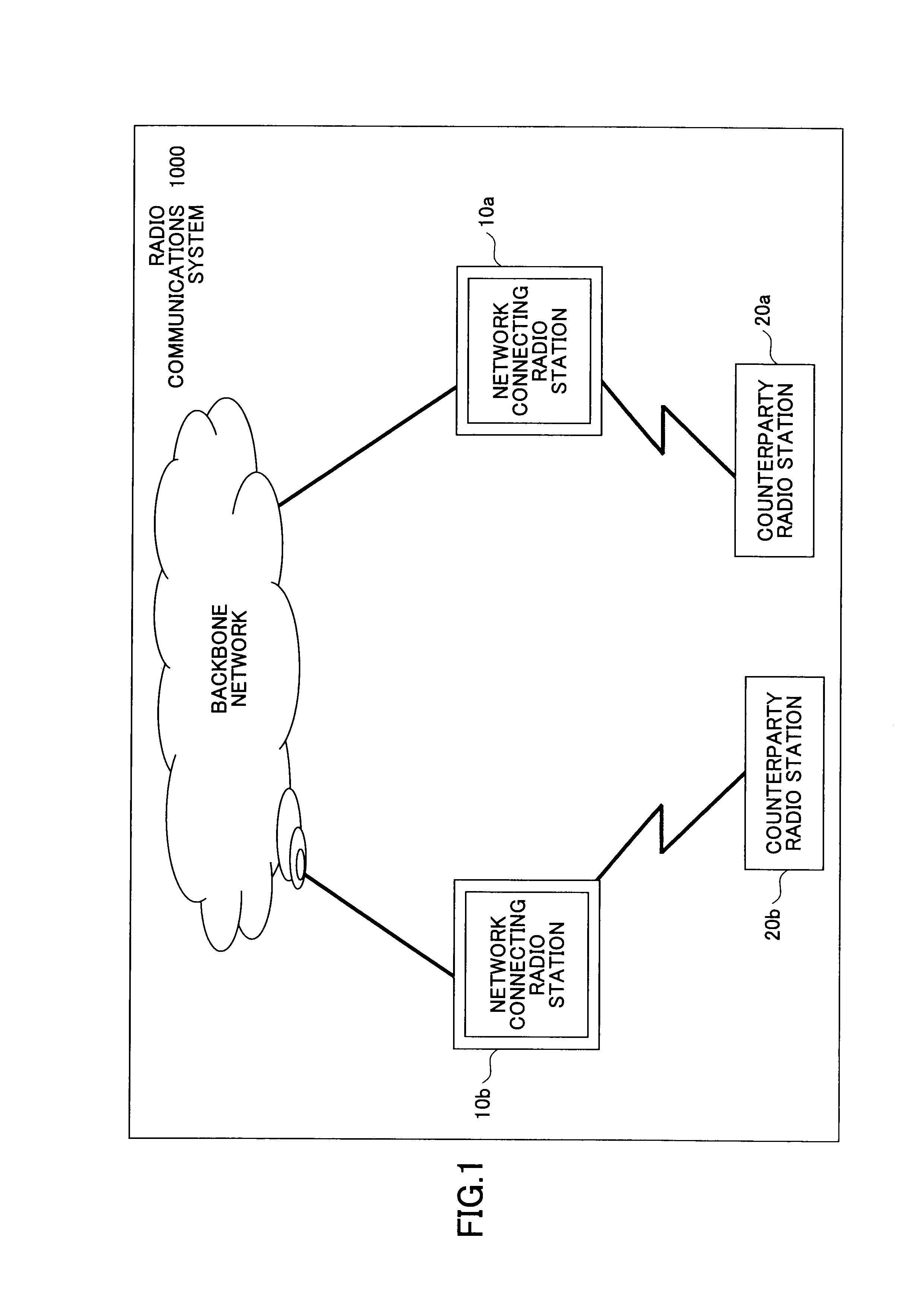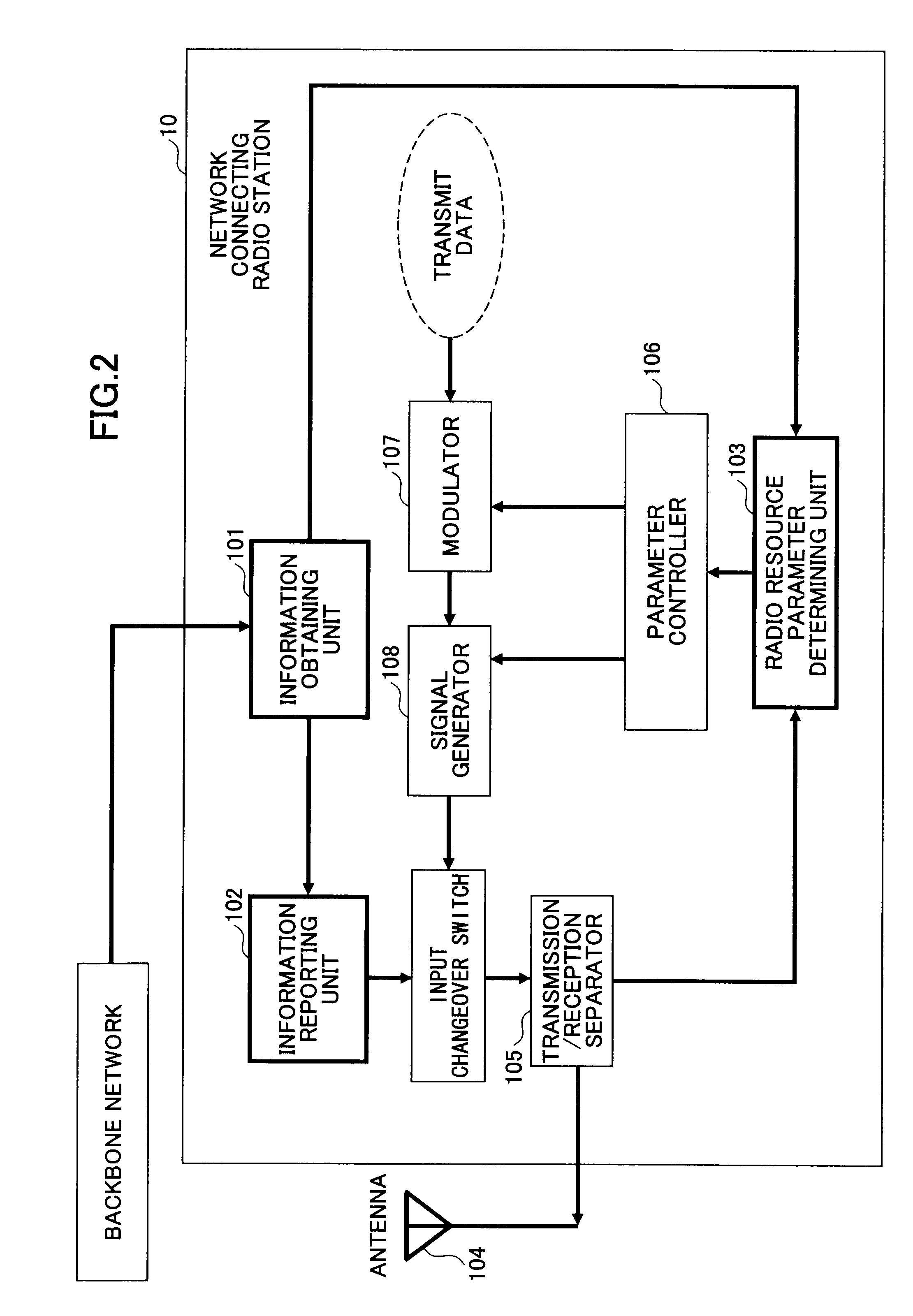Radio communications system and radio communications method
a radio communication system and radio communication technology, applied in the field of radio communication systems and radio communication methods, can solve the problems of grouping and proper resource allocation cannot be performed, occurrence of significant degradation of characteristics in geographical regions, and inability to achieve significant degradation of characteristics, etc., to achieve the effect of effectively utilizing frequency resources and suppressing interferen
- Summary
- Abstract
- Description
- Claims
- Application Information
AI Technical Summary
Benefits of technology
Problems solved by technology
Method used
Image
Examples
embodiment 1
1.1 System
[0172]FIG. 1 illustrates a conceptual diagram representing a configuration of a radio communications system according to the present invention. The radio communications system 1000 includes a backbone network; a network connecting radio station 10 (herein shown as 10a and 10b), which is a radio station connected to the backbone network; and a counterparty radio station 20 (herein shown as 20a and 20b), which is a communications counterparty thereto. The network connecting radio station 10 may be connected, at all times, to the backbone network such as a base station in a cellular network, or may be connected as needed. In the case of being connected as needed, a radio station having a function of the above-described network connecting radio station, of radio stations located within the radio communications system, which is temporarily connected to the backbone network, functions as the above-described network connecting radio station. In the example illustrated, the radio ...
embodiment 2
[0261]In a radio communications system according to a second embodiment of the present invention, the counterparty radio station to be the communications counterparty of the network connecting radio station, in addition to extracting waveform information on the received signal, demodulates the received signal in order to determine the reliability of the radio communications path.
2.1 Radio Station and Counterparty Radio Station
[0262]FIG. 23 illustrates a network connecting radio station 50 in a radio communications system according to the second embodiment. The network connecting radio station 50 includes an information obtaining unit 501; an information reporting unit 502; a radio resource parameter determining unit 503; an antenna 504; a transmission and reception separator 505; a parameter controller 506; a modulator 507; a signal generator 508; and a received interference estimating unit 516. The received interference estimating unit 516 may be provided within a radio resource pa...
embodiment 3
3.1 Radio Station and Counterparty Radio Station
[0303]In the third embodiment of the present invention, a signal transmitted by the other surrounding station 30 is demodulated and the reliability level is determined. On this point, the determining of the reliability level differs from examples in FIGS. 28 and 29 that are performed in both the counterparty radio station 60 and the network radio station 50.
[0304]FIG. 30 illustrates a network connecting radio station 70 in a radio communications system according to the third embodiment. The network connecting radio station 70 includes an information obtaining unit 701; an information reporting unit 702; a radio resource parameter determining unit 703; an antenna 704; a transmission and reception separator 705; a parameter controller 706; a modulator 707; a signal generator 708; a received interference estimating unit 716; a signal demodulator 717; and a reliability determining unit 718. The received interference estimating unit 716 may...
PUM
 Login to View More
Login to View More Abstract
Description
Claims
Application Information
 Login to View More
Login to View More - R&D
- Intellectual Property
- Life Sciences
- Materials
- Tech Scout
- Unparalleled Data Quality
- Higher Quality Content
- 60% Fewer Hallucinations
Browse by: Latest US Patents, China's latest patents, Technical Efficacy Thesaurus, Application Domain, Technology Topic, Popular Technical Reports.
© 2025 PatSnap. All rights reserved.Legal|Privacy policy|Modern Slavery Act Transparency Statement|Sitemap|About US| Contact US: help@patsnap.com



